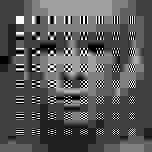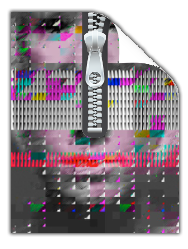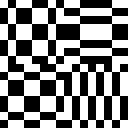3 screen render for NXT: Still Processing, Amsterdam, Netherlands, 2025.
a desktop tele-chorale organised by the Angel of History; Congregating the women whose faces are appropriated
for the use on color-calibration test cards
Together, they form the i.R.D. Perfect De/Calibration Army.

WRITTEN (THEORY)
>>> APPROP/R/PIRATE
>>> BEHIND WHITE SHADOWS (OF IMAGE PROCESSING) (2017)
>>> ADDENDUM (2017)
>>> APPROP/R/PIRATE
>>> BEHIND WHITE SHADOWS (OF IMAGE PROCESSING) (2017)
>>> ADDENDUM (2017)
ARTWORKS (PRACTICE)
>>> Pique Nique pour les Inconnues (2017 - 2020)
>>> The i.R.D Perfect DE/CALIBRATION ARMY and 365PERFECT (2017 - ...)
>>> PATCH (for the i.R.D Perfect DE/CALIBRATION ARMY) (2017)
>>> Pique Nique pour les Inconnues (2017 - 2020)
>>> The i.R.D Perfect DE/CALIBRATION ARMY and 365PERFECT (2017 - ...)
>>> PATCH (for the i.R.D Perfect DE/CALIBRATION ARMY) (2017)

Over the years, I have found many different copies of the image of my face (hailing from the Vernacular of File Formats) used both with and without permission or accreditation.
>Here< you can find a small collection of examples
I believe and publish with a Copy <it> Right ethic:
To me, copying as a creative, exploratory, and educational act is free and encouraged, provided proper accreditation is given. However, when copying becomes commodification and profit is anticipated, explicit permission must be sought and compensation may be requested.
As I began finding my face on commercially available objects, commodified and uncredited, I wondered what it meant to lose authorship and ownership of my face, and whether historical precedents exist.
During my research I came across the stories of color test cards: photographs of Caucasian women used to calibrate analog and digital image-processing technologies. These women have been reused endlessly, yet very little—sometimes not even their names—is known about them.
>Here< you can find a small collection of examples
I believe and publish with a Copy <it> Right ethic:
First, it’s okay to copy! Believe in the process of copying as much as you can; with all your heart is a good place to start – get into it as straight and honestly as possible. Copying is as good (I think better from this vector-view) as any other way of getting ’there.’
NOTES ON THE AESTHETICS OF ‘copying-an-Image Processor’
– Phil Morton (1973).
To me, copying as a creative, exploratory, and educational act is free and encouraged, provided proper accreditation is given. However, when copying becomes commodification and profit is anticipated, explicit permission must be sought and compensation may be requested.
As I began finding my face on commercially available objects, commodified and uncredited, I wondered what it meant to lose authorship and ownership of my face, and whether historical precedents exist.
During my research I came across the stories of color test cards: photographs of Caucasian women used to calibrate analog and digital image-processing technologies. These women have been reused endlessly, yet very little—sometimes not even their names—is known about them.
This resulted in the research essay Behind White Shadows, which was published in:
Behind White Shadows essay for solo show (TRANSFER gallery, NY, 2017)
Faceless, De Gruyter, 2018 (ed: Bogomir Doringer)
Performing the System (ed: Nora Brünger, Luzi Gross, Torsten Scheid: 2019, Universitätsverlag Hildesheim)
Computer Grrls (ed. Inke Arns, HMKV, 2021)
Behind White Shadows was also featured in the Cyberfeminism Index (ed. Mindy Sue, 2023)
Behind White Shadows essay for solo show (TRANSFER gallery, NY, 2017)
Faceless, De Gruyter, 2018 (ed: Bogomir Doringer)
Performing the System (ed: Nora Brünger, Luzi Gross, Torsten Scheid: 2019, Universitätsverlag Hildesheim)
Computer Grrls (ed. Inke Arns, HMKV, 2021)
Behind White Shadows was also featured in the Cyberfeminism Index (ed. Mindy Sue, 2023)

